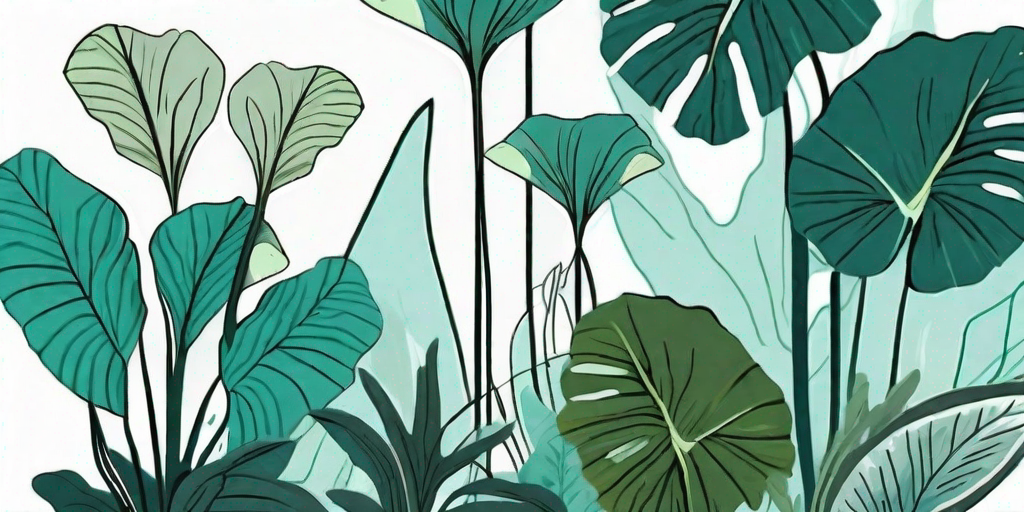
Ah, the elephant ear plant, a tropical paradise in your own backyard. Its large, dramatic leaves can transform any space into a lush, exotic retreat. But what happens when trouble strikes in paradise? When your elephant ear plant starts to look more like a wilting wallflower than a jungle queen? Fear not, dear reader, for we have the solutions to your leafy woes.
Understanding Your Elephant Ear Plant
Before we dive into the nitty-gritty of plant care, let's take a moment to understand what we're dealing with. The elephant ear plant, or Colocasia, is a tropical plant native to Southeast Asia. It's known for its large, heart-shaped leaves that resemble, you guessed it, an elephant's ear.
These plants are generally easy to care for, but like any living thing, they have their quirks. If you've noticed your elephant ear plant looking a bit under the weather, it's likely due to one of a few common issues. But don't worry, we're here to help you diagnose and treat your plant's ailments, so it can get back to its leafy, luxurious self.
Common Elephant Ear Plant Problems
Let's get into the meat and potatoes of the matter. Or should we say, the roots and leaves? Here are some common issues that might be plaguing your elephant ear plant:
Yellowing Leaves
Yellowing leaves are often a sign of overwatering. Elephant ear plants love moisture, but too much of a good thing can lead to root rot. If your plant's leaves are turning yellow, try cutting back on the H2O.
Another possible cause of yellowing leaves is a lack of sunlight. These plants love the sun, so make sure your elephant ear plant is getting plenty of light. If it's not, consider moving it to a sunnier spot or supplementing with a grow light.
Brown Spots
Brown spots on your elephant ear plant's leaves could be a sign of a fungal infection. This is often caused by too much moisture and not enough air circulation. To treat this, cut off the affected leaves and make sure your plant is getting plenty of fresh air.
Another possible cause of brown spots is pests. Check the undersides of your plant's leaves for any signs of insects. If you find any, treat your plant with an insecticidal soap or neem oil.
How to Care for Your Elephant Ear Plant
Now that we've covered the common issues, let's talk about how to keep your elephant ear plant happy and healthy. Here are some pro tips:
Watering
As we mentioned earlier, elephant ear plants love moisture, but they don't like to be waterlogged. The key is to keep the soil consistently moist, but not soggy. A good rule of thumb is to water your plant when the top inch of soil feels dry to the touch.
Also, make sure your plant has good drainage. This will help prevent root rot and other moisture-related issues. If your plant is in a pot, make sure it has drainage holes. If it's in the ground, make sure the soil is well-draining.
Lighting
Elephant ear plants love the sun, but they can also tolerate some shade. They do best in bright, indirect light. If your plant isn't getting enough light, its leaves may start to yellow. To prevent this, make sure your plant is getting at least six hours of bright, indirect light each day.
If you're growing your elephant ear plant indoors, you might need to supplement with a grow light, especially during the winter months when natural light is scarce.
FAQs
- Why are my elephant ear plant's leaves turning yellow?
- This could be due to overwatering or a lack of sunlight. Try cutting back on watering and making sure your plant is getting plenty of light.
- What should I do if my elephant ear plant has brown spots?
- Brown spots could be a sign of a fungal infection or pests. Cut off the affected leaves and treat your plant with an insecticidal soap or neem oil.
- How often should I water my elephant ear plant?
- Water your plant when the top inch of soil feels dry to the touch. Make sure the soil is consistently moist, but not soggy.
- How much light does my elephant ear plant need?
- Your plant needs at least six hours of bright, indirect light each day. If it's not getting enough light, its leaves may start to yellow.
So there you have it, folks. With a little TLC and some cheeky plant know-how, you can turn your elephant ear plant's frown upside down. Remember, every plant has its quirks, but with patience and care, you can overcome any leafy woes. Now go forth and be the plant whisperer we know you can be!















